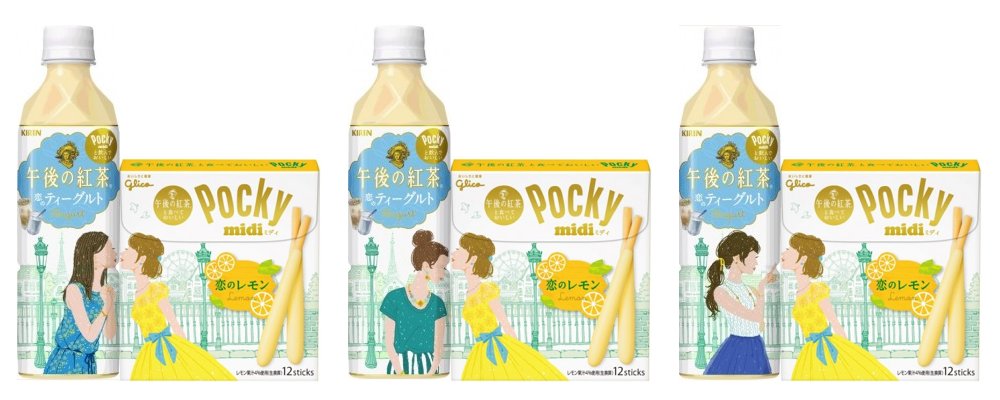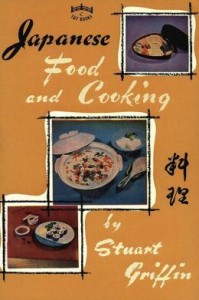Life After JET: Podcast interview with Stephen Horowitz, Director of Legal English Programs
*******
*******
Steven Horowitz (Aichi-ken, Kariya-shi, 1992-94) is the founder of JETwit, a member of the JETAA USA Board of Advisors, and Director of Legal English Programs at St. John’s University School of Law in Queens, NYC, “the most ethnically diverse urban place on the planet.” He also writes for the St. John’s Legal English Blog.
I was recently interviewed for a podcast episode by Louise Kulbicki, founder of StudyLegalEnglish.com, about the legal English work I do at St. John’s Law School with the LLM students and other non-native English speaking students there. Since my experience on JET teaching English and learning to function well in a cross-cultural environment has been core to my current career, and since JETs often want to know what people do after JET, I thought I’d share the interview here in case of interest.
Here’s a link to the podcast episode titled “LL.M. Legal Writing Tips with Stephen Horowitz”
Topics covered:
- Legal English LLM programmes for non-native speakers
- Legal English writing challenges and tips
- Using IRAC – Issue, Rule, Application, and Conclusion
- Understanding categorization
- Legal English resources
And here’s the video version of the podcast:
To learn more about what I do, or if you’re interested in getting into the field of legal English, you can read more at the St. John’s Legal English Blog. Feel free to contact me as well. (Did I mention I’m fortunate to work with two other JET alums at St. John’s Law School?)
The JET Program was founded in 1987 as a program that fostered ties between Japan and four other nations. Today, the program has evolved to include participants from more than 40 countries around the world, with activities ranging from English-teaching to sports exchanges.
This episode of Asia on Air celebrates 30 years of the JET program by interviewing three former JETs:
- Joy Champaloux, Associate Program Officer at Sasakawa USA and President of the JET Alumni Association of Washington, D.C.;
- Bill Clifford, CEO and President of the World Affairs Councils of America and Non-resident Senior Fellow at the Foreign Policy Institute at the School of Advanced International Studies at Johns Hopkins University; and
- Hayley Aron, Administrative and Program Assistant at the Maureen and Mike Mansfield Foundation.
Listen in for host Brian Graf’s discussion with our accomplished guests on their experiences in Japan as JETs and how these experiences have shaped their careers and encouraged them to support U.S.-Japan relations.
Host and Creator: Brian Graf
Guests: Bill Clifford, Hayley Aron, and Joy Champaloux
Producer and Engineer: Graham Dietz
Music by HitsLab and Moby Gratis
Asia on Air is a new Sasakawa USA podcast committed to analysis of the latest news in U.S.-Asia relations. Through the lens of the U.S.-Japan relationship, each episode features expert opinions on a variety of subjects ranging from security and foreign policy to economics and culture. Click here to listen to Asia on Air’s SoundCloud channel.
St. John’s Legal English: Comprehensible input for legal English students
Steven Horowitz (Aichi-ken, 1992-94) is Director of Legal English at St. John’s University School of Law in Queens, NY and publisher of the St. John’s Legal English blog. He will be attending the upcoming TESOL International Conference in Seattle and will be on a panel titled “Legal Language: Strategies for Effective Communication in Law School” scheduled for March 23.
 Comprehensible input for legal English students: Resources, approaches & ideas
Comprehensible input for legal English students: Resources, approaches & ideas
International students in LLM and legal English programs at US law schools come to study law, not ESL. At the same time, law study requires deep engagement with texts and concepts that are complex and challenging even for native English speakers. But how do you have substantive class discussions or evaluate students’ legal writing when students are struggling to sufficiently comprehend the language of the reading?
In linguistics, the relevant term is “comprehensible input.”
Click here to read the full blog post on the St. John’s Legal English blog.
I’ll Make It Myself!: Black Sesame and Pear Muffins
LM (CIR Ishikawa-ken, Anamizu, 2009-11) is the editor of The Ishikawa JET Kitchen: Cooking in Japan Without a Fight. Ze works in international student exchange; writes I’ll Make It Myself!, a blog about food culture in Japan and the US; curates The Rice Cooker Chronicles, a series of essays by JETs and JET alumni on the theme of cooking/eating and being alone in Japan; and admins The JET Alumni Culinary Group on LinkedIn.
Have I told you, dear readers, how much I love Lottie and Doof‘s “Black Sesame and Pear Cake”? When I could get Western pears, I loved making that cake in Japan, where black sesame is a common ice cream and wagashi flavor. I wanted to adapt the flavors of this cake into something smaller, less sweet, and more portable for weekday breakfasts, hence the muffins.
Life in Japan: How a 1 Year Stay Becomes a Decade
By Jon Dao (Toyama-ken, 2009-12) from his podcast Discussions with Dao. Jon works as a speech coach and personal trainer.
For the people who want to go to Japan, what’s your story? For the people who left, how’d you know you had enough? For the people who continue to stay, what’s your reason?
In this episode, Andy Morgan shares his ties to Japan. This is a great listen for anyone who’s planning to stay in the country after they finish JET. (Hint: learn the language!)
Andy’s first appearance detailed more of his roots and Intermittent Fasting knowledge. If you enjoyed that, be sure to check out the varying degrees of fitness talk in his second appearance,third appearance, and fourth!
I’ll Make It Myself!: Afternoon Tea x Glico’s “Sweet Love Story”
L.M. (CIR Ishikawa-ken, Anamizu, 2009-11) is the editor of The Ishikawa JET Kitchen: Cooking in Japan Without a Fight. Ze works in international student exchange; writes I’ll Make It Myself!, a blog about food culture in Japan and the US; curates The Rice Cooker Chronicles, a series of essays by JETs and JET alumni on the theme of cooking/eating and being alone in Japan; and admins The JET Alumni Culinary Group on LinkedIn.

Via @eerrkkyy. Images of Aya, the Pocky character, in a yellow dress and her lips puckered up, lined up with the women characters from the Afternoon Tea bottles, thus appearing to kiss them.
On Feb. 16, 2016, Kirin’s Afternoon Tea brand and Glico’s candy Pocky released their second design/pairing collaboration with Pocky’s “Lemon Love” (恋のレモン) and Afternoon Tea’s “Teagurt” (yogurt + tea) (ティーグルト). Eaten together, the candy and the tea are supposed to taste like rare cheesecake (レアチーズケーキ) a Japanese style of cheesecake that isn’t baked but is stabilized by the addition of gelatin. The package design is also a collaboration: the Pocky boxes feature a woman (Aya) in a yellow dress on one set and a man (Tsubasa) in a yellow vest on the other. Aya and Tsubasa are positioned on the left side of their respective Pocky boxes so you can pair them with the 6 different characters featured on the right side on the drink bottle. There are three men and three women characters on the drink bottles, with one woman character and one man character on opposite sides of the same bottle, so you can turn the bottle to have the character of your choice to face the character on your Pocky box.
At first glance, it looks like Glico and Kirin have created something inclusive, and it’s really, really adorable.
At least until you start reading the copy.
I’ll Make It Myself!: Crying a Thousand Beautiful Tears into my Tofu
L.M. (CIR Ishikawa-ken, Anamizu, 2009-11) is the editor of The Ishikawa JET Kitchen: Cooking in Japan Without a Fight. Ze works in international student exchange; writes I’ll Make It Myself!, a blog about food culture in Japan and the US; curates The Rice Cooker Chronicles, a series of essays by JETs and JET alumni on the theme of cooking/eating and being alone in Japan; and admins The JET Alumni Culinary Group on LinkedIn.
On my business trip, I had an overnight in Kyoto, and my coworker and I stopped to get lunch at Kyoto Station before going to our hotel. While I’m partial to the “solid tofu” (katatôfu [堅豆腐]) of the Kaga region, I also love Kyoto’s yuba (ゆば, 湯葉), the “tofu skin” and didn’t want to leave the city without eating some. We stopped at Kyotofu Fujino (京豆富「不二乃)」, the Kyoto JR Station’s location of Kyotofu Fujino (note the different kanji: 京とうふ藤野) and ordered a set lunch.
And then proceeded to weep into our tofu.
JQ Magazine: Manga Review — ‘Shigeru Mizuki’s Hitler’

“Hitler is successful at educating us about the danger posed by people who can ride the waves of pain, fear, and anger in others to bring them crashing down onto the world.” (Drawn and Quarterly)
By Julio Perez Jr. (Kyoto-shi, 2011-13) for JQ magazine. A bibliophile, writer, translator, and graduate from Columbia University, Julio currently keeps the lights on by working at JTB USA while writing freelance in New York. Follow his enthusiasm for Japan, literature, and comic books on his blog and Twitter @brittlejules.
Welcome to the most difficult book review I have ever written. Not only am I challenged to write something meaningful about a great artist’s work on a very complicated and rightfully vilified man, but I also bear a burden on my heart as I address the passing of said great artist, Shigeru Mizuki.
Last week, the world lost a much-loved cartoonist. Mizuki brought comics into the world that celebrated the strange and mysterious with unique humor and style. He brought joy to generations, young and old, with his ever popular series GeGeGe no Kitaro. He also challenged us to face and remember atrocities of war in his own country, and others, by bringing to life the war he survived through his historical manga Showa: A History of Japan, an epic work available now in English in four volumes, and a manga examination of the life of Adolf Hitler, released in English just two weeks before his passing.
We have been able to enjoy more of Mizuki’s work in the West thanks to the publishing company Drawn and Quarterly and the herculean efforts of JET Alum (and JQ interviewee) Zack Davisson (Nara-ken, 2001-04; Osaka-shi, 2004-06), who translated all four parts of Showa as well as Hitler. Davisson, a great fan of Mizuki, maintains a blog on Japanese tales, monsters, and yokai, where you can find his own work and more about the legendary cartoonist.
I’ll Make It Myself: Halloween in Japan (2015): Krispy Kreme’s “Mad for Monsters” Campaign
L.M. (CIR Ishikawa-ken, Anamizu, 2009-11) is the editor of The Ishikawa JET Kitchen: Cooking in Japan Without a Fight. Ze works in international student exchange; writes I’ll Make It Myself!, a blog about food culture in Japan and the US; curates The Rice Cooker Chronicles, a series of essays by JETs and JET alumni on the theme of cooking/eating and being alone in Japan; and admins The JET Alumni Culinary Group on LinkedIn.
Krispy Kreme’s “Mad for Monsters” campaign features four types of doughnuts: Spider Chocolate Custard (スパイダーチョコカスタード), a custard-filled doughnut with a spiderweb design in chocolate icing; Caramel Halloween Jack (キャラメルハロウィーンジャック), a caramel-custard-filled doughnut with a jack-o-lantern design; Maple Milk Franken (メプルミルクフランケン), a square doughnut with a Frankenstein’s monster design and filled with maple custard; and Purple Potato Monster (ムラサキイモモンスター), a yeast ring with purple-sweet-potato icing and three cereal “eyes.”
I’ll Make It Myself!: Halloween Food in Japan (2015): Mister Donut Pon de Shu
L.M. (CIR Ishikawa-ken, Anamizu, 2009-11) is the editor of The Ishikawa JET Kitchen: Cooking in Japan Without a Fight. Ze works in international student exchange; writes I’ll Make It Myself!, a blog about food culture in Japan and the US; curates The Rice Cooker Chronicles, a series of essays by JETs and JET alumni on the theme of cooking/eating and being alone in Japan; and admins The JET Alumni Culinary Group on LinkedIn.
Documenting Halloween in Japan used to be sort of a game to see which companies were marketing the holiday as a seasonal event amidst globalization and marketing gimmicks…. I wanted all the cool doughnuts from the website/ad, but all Ikebukuro had was the jack-o-lantern shaped ones. I also got a kinako raised ring (yeast doughnut) and a chocolate Pon de Ring.
Click HERE to read MORE.
I’ll Make It Myself!: Halloween Food in Japan 2015: Family Mart
L.M. (CIR Ishikawa-ken, Anamizu, 2009-11) is the editor of The Ishikawa JET Kitchen: Cooking in Japan Without a Fight. Ze works in international student exchange; writes I’ll Make It Myself!, a blog about food culture in Japan and the US; curates The Rice Cooker Chronicles, a series of essays by JETs and JET alumni on the theme of cooking/eating and being alone in Japan; and admins The JET Alumni Culinary Group on LinkedIn.
What a perfect time to come to Japan and do some food anthropology! It’s been 10 years since I first came to Japan, and now I’m back for a quick visit, just in time for documenting Halloween. How far we’ve come in ten years from just Baskin Robbins’ Halloween flavors.
I’ll Make It Myself!: Pixelated 1-Up Cake (Mario Bros.)
L.M. Zoller (CIR Ishikawa-ken, Anamizu, 2009-11) is the editor of The Ishikawa JET Kitchen: Cooking in Japan Without a Fight. Ze works in international student exchange; writes I’ll Make It Myself!, a blog about food culture in Japan and the US; curates The Rice Cooker Chronicles, a series of essays by JETs and JET alumni on the theme of cooking/eating and being alone in Japan; and admins The JET Alumni Culinary Group on LinkedIn.

This Nintendo-inspired design is simple to create and works with any round cake–although you won’t want to miss this white-pepper-and-ginger one, which is easily to make in Japan, too.
I’ll Make It Myself!: Ful Medames with Fresh Fava Beans
L.M. (CIR Ishikawa-ken, Anamizu, 2009-11) is the editor of The Ishikawa JET Kitchen: Cooking in Japan Without a Fight. Ze works in international student exchange; writes I’ll Make It Myself!, a blog about food culture in Japan and the US; curates The Rice Cooker Chronicles, a series of essays by JETs and JET alumni on the theme of cooking/eating and being alone in Japan; and admins The JET Alumni Culinary Group on LinkedIn.

Fresh fava beans one of the delights of spring in Japan. Learn how to measure and prepare them in this Japan-friendly recipe!
I’ll Make It Myself!: Add a Dash of Cultural Imperialism: Japanese Food and Cooking (1956), Part 5
L.M. (CIR Ishikawa-ken, Anamizu, 2009-11) is the editor of The Ishikawa JET Kitchen: Cooking in Japan Without a Fight. Ze works in international student exchange; writes I’ll Make It Myself!, a blog about food culture in Japan and the US; curates The Rice Cooker Chronicles, a series of essays by JETs and JET alumni on the theme of cooking/eating and being alone in Japan; and admins The JET Alumni Culinary Group on LinkedIn.
Part 5 on a series about Stuart Griffin’s Japanese Food and Cooking (1956).
If sushi is the engagement, sashimi, or raw fish, is the wedding. Now is the time to stop dabbling an plunge bolding into what may be regarded as the pièce de résistance, in the accepted French sense, and what some may regard as just the piece to resist, other will regard as the one they cannot resist.
Raw fish, to many foreigners, spells trouble.
“Raw fish!” one can hear them scream, “how could anyone think of eating such a thing?” (36)
I’ll Make It Myself!: Add a Dash of Cultural Imperialism: Japanese Food and Cooking (1956), Part 4
L.M. (CIR Ishikawa-ken, Anamizu, 2009-11) is the editor of The Ishikawa JET Kitchen: Cooking in Japan Without a Fight. Ze works in international student exchange; writes I’ll Make It Myself!, a blog about food culture in Japan and the US; curates The Rice Cooker Chronicles, a series of essays by JETs and JET alumni on the theme of cooking/eating and being alone in Japan; and admins The JET Alumni Culinary Group on LinkedIn.
Part 4 on a series about Stuart Griffin’s Japanese Food and Cooking (1956).
We’ve made it to the sushi chapter, readers!
I’ve spoken with several people about Griffin’s choice to describe sushi (well, nigiri sushi) as “rice sandwiches.” While I think most Americans in 2015 have some idea of what sushi is, in the 1950s, outside of Japanese-American communities, some explanation may have been required. Reactions to “rice sandwiches” have ranged from “no, that makes sense” to “aren’t they more like hors d’oeuvres?“* to (my favorite) “Do you know how sandwiches work?”







